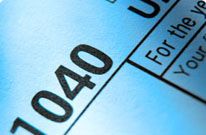Search results
Filing Individual Taxes - IRS
www.irs.govDeadline: April 18
- 1040 Form Instructions
- 1040-EZ Form Instructions
- 1040A Form Instructions
- 1040ES Form & Instr.
- Tax Tables Download
- Schedule A Form Instructions
- Schedule D Form Instructions
Oct 19, 2023 · Most people use the Schedule D form to report capital gains and losses that result from the sale or trade of certain property during the year. In 2011, however, the Internal Revenue Service created a new form, Form 8949, that some taxpayers will have to file along with their Schedule D and 1040 forms.
Jan 5, 2024 · Schedule D is used for reporting short-term and long-term gains or losses. The calculations from Schedule D impact a taxpayer's adjusted gross income when they are added to Form 1040. Who...
Jan 4, 2024 · Schedule D is one of many schedules provided by the IRS and filed with the U.S. Individual Income Tax Return Form 1040. Schedule D is required when reporting any gains or losses...
Jan 20, 2024 · What is a Schedule D? Schedule D is an IRS tax form that reports your realized gains and losses from capital assets, that is, investments and other business interests.
Oct 4, 2023 · Schedule D is the IRS form you use to report sales and exchanges of certain assets, as well as the gains or losses from all asset sales. You use Schedule D to report money you made or lost by selling investments like stocks, mutual funds, digital assets, and publicly traded partnerships (PTPs).
You must check Box DRAFT. D, E, or F below. Check only one box. If more than AS July 23, one box applies for your OF 2021. long-term transactions, complete a separate Form 8949, page 2, for each applicable box. If you have more long-term transactions than will fit on this page for one or.
Mar 1, 2024 · Schedule D is a tax form used to report capital gains and losses. If you’ve sold a significant piece of property — also known as a capital asset — you’ll use it to let the IRS know. A “schedule” like this one is basically an addendum to Form 1040, which is the individual income tax return everyone fills out.

